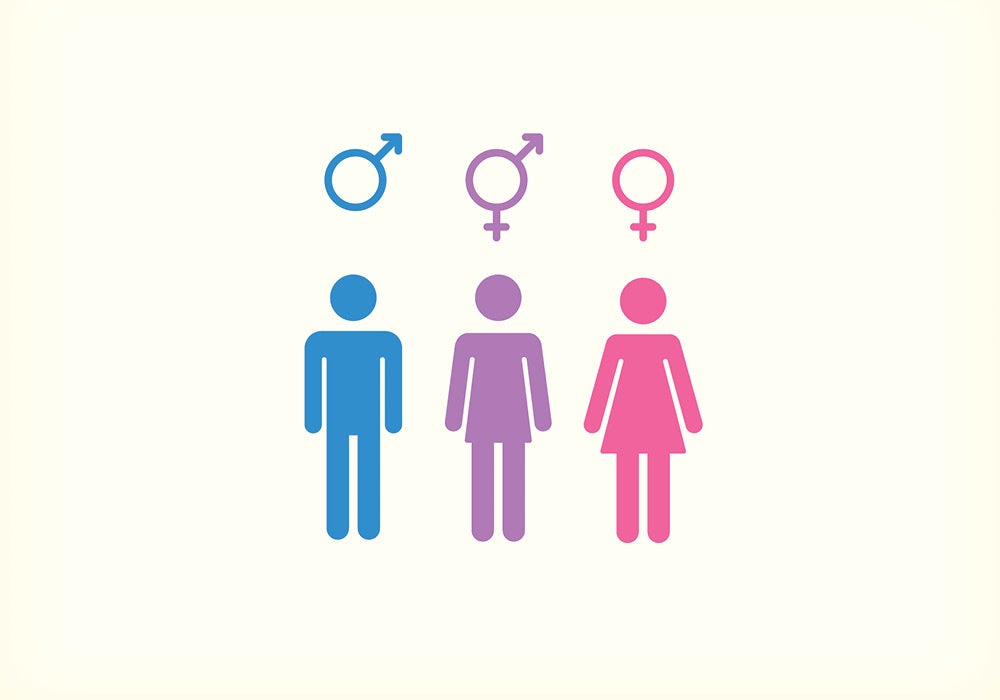Your cart is currently empty!

Sex vs. Gender
Why It Matters
In contemporary discourse, the terms “sex” and “gender” are often used interchangeably, leading to confusion and potential harm, especially when these concepts influence policy discussions. However, it’s crucial to recognize that sex and gender are distinct concepts: one grounded in biological reality, the other in social construction. There are critical differences between sex and gender, and potentially harmful implications of conflating the two, which is why it’s essential to approach these topics separately in both personal and policy discussions. First, let’s establish our terms:
Sex: A Biological Reality
Sex is a biological classification based on physical and physiological characteristics, such as reproductive organs, chromosomes, and hormone levels. Typically categorized as male or female, sex is determined by a person’s chromosomes. The biological basis of sex is well-established in scientific literature, with clear, measurable attributes distinguishing males from females. As an academic article notes, “Sex is a physical characteristic, with biological markers such as chromosomes, gonads, and hormone levels, making it a verifiable and objective reality.”
This biological foundation provides a clear and consistent framework for understanding sex, leaving little room for ambiguity. By contrast, the concept of gender is far more fluid and subjective.
Gender: A Social Construct
Gender, on the other hand, is a socially constructed concept that refers to a person’s self-representation and how they are perceived by others. Unlike sex, gender is influenced by social, cultural, and personal experiences and can include a person’s roles, behaviors, expressions, and identities. The influential work “Doing Gender” by Candace West and Don H. Zimmerman explains that gender is “performed” through social interactions, reinforcing the idea that it is not an innate characteristic but rather a product of societal norms.
Judith Lorber’s book The Social Construction of Gender further elaborates on how gender is maintained through societal expectations and institutions: “Gender is not something we are born with, and not something we have, but something we do – something we perform through our daily activities.” This understanding of gender as a construct highlights its inherent subjectivity, contrasting sharply with the biological concreteness of sex.
The Inaccuracy of Self-Perception
Given that gender is shaped by social and cultural influences, it is fundamentally a product of self-perception. However, this self-perception is often influenced by subconscious judgments and cognitive biases, which may not accurately reflect reality. The article “The Illusion of Self” discusses how cognitive biases can distort self-perception, leading to inaccurate judgments about oneself and others. This aligns with the idea that gender perceptions, being rooted in subjective experiences and societal pressures, may not be reliable indicators of a person’s true nature.
Moreover, George Lakoff and Mark Johnson’s Metaphors We Live By illustrates how metaphorical thinking shapes our understanding of complex concepts like gender. They argue that our metaphors influence not only how we talk about gender but also how we perceive and experience it: “Our ordinary conceptual system, in terms of which we both think and act, is fundamentally metaphorical in nature.” This metaphorical nature of gender construction further complicates its reliability as a basis for personal and policy decisions.
The Policy Implications of Gender Identity
When gender, a social construct, is conflated with biological sex in policy discussions, the results can be problematic. A policy brief from the Heritage Foundation warns of the “legal and societal challenges of conflating gender identity with biological sex,” emphasizing that such policies can have unintended consequences. This caution is echoed in the article “The Gender Identity Policy Conundrum,” which highlights the risks of ignoring biological reality in favor of subjective self-identification in legal frameworks.
These concerns underscore the importance of keeping sex and gender as separate concepts in policy discussions, ensuring that decisions affecting millions of people are grounded in objective, verifiable facts rather than subjective self-perceptions.
The Dangers of Labeling and Self-Identity
Focusing excessively on gender identity can also lead to personal and psychological challenges. The book chapter “The Tyranny of the Label” discusses how identity labels, including those related to gender, can create “rigid mental frameworks” that limit personal growth and self-understanding. Similarly, a journal article on labels and mental health notes that such labels can contribute to mental health issues by constraining an individual’s sense of self. This aligns with the idea that focusing too much on gender identity may do more harm than good, creating a “rigid mental cage” that distances someone from their true self rather than helping them find it.
Moving Beyond Gender Identity
Given the complexities and potential pitfalls associated with gender identity, it may be appropriate to move beyond a focus on this concept altogether. Instead, we could shift our attention to more substantive issues, such as personal responsibility and individual growth, which transcend the limitations of socially constructed labels.
For further insights on this topic, readers are encouraged to explore two articles on ItsChromo.com: “Debunking the Gender-Brain Myth,” which highlights the lack of biological connection to gender identification, and “The Pitfalls of Self-Identity: Escape the Labels,” which discusses how a focus on labeling one’s identity can create more harm than good. These articles reinforce the idea that moving beyond gender identity and embracing a more holistic understanding of the self could lead to more meaningful personal and societal progress.
Read More: Supporting Resources and Further Reading
To deepen your understanding of the topics discussed in this article, the following resources provide comprehensive insights into the distinction between sex and gender, the implications of conflating the two, and the potential psychological and societal impacts of focusing on gender identity.
1. Sex vs. Gender Distinction
- “Sex and Gender: A Distinction with a Difference”
- Summary: This academic article explains the biological basis of sex and the social construction of gender, highlighting the importance of treating these concepts separately in both scientific and social contexts.
- Link: National Institutes of Health (NIH) – Sex and Gender Distinction
- “The Binary Revisited: A Feminist Perspective on the Sex/Gender Distinction”
- Summary: This article explores the philosophical roots of the sex/gender distinction, arguing that while sex is biologically grounded, gender is socially constructed.
- Link: Cambridge University Press
2. Gender as a Social Construct
- “Doing Gender” by Candace West and Don H. Zimmerman
- Summary: A seminal work in sociology that discusses how gender is “performed” through social interactions, reinforcing the concept of gender as a social construct.
- Link: JSTOR
- “The Social Construction of Gender” by Judith Lorber
- Summary: This book provides an in-depth analysis of how gender is socially constructed and maintained through societal norms, expectations, and institutions.
- Link: Google Books
3. Inaccuracy of Self-Perception and Projected Judgments
- “The Illusion of Self: A Study of Self-Perception and the Role of Cognitive Bias”
- Summary: This article discusses how cognitive biases, including the confirmation bias and self-serving bias, can distort self-perception and lead to inaccurate judgments, relevant to the discussion of gender as a social construct.
- Link: American Psychological Association (APA)
- “Metaphors We Live By” by George Lakoff and Mark Johnson
- Summary: This book explores how metaphors shape our thoughts and perceptions, supporting the idea that gender is a constructed concept influenced by metaphorical thinking.
- Link: University of Chicago Press
4. Policy Implications of Gender Identity
- “The Trouble with Gender Identity Legislation”
- Summary: A policy brief that discusses the potential legal and societal challenges of conflating gender identity with biological sex in legislation, highlighting the risks of such policies.
- Link: Heritage Foundation
- “The Gender Identity Policy Conundrum”
- Summary: This journal article examines the impact of gender identity policies on society and the risks of ignoring biological sex in favor of subjective self-identification.
- Link: International Journal of Law and Psychiatry
5. Critique of Labeling and Self-Identity
- “The Tyranny of the Label: How Labels Shape and Constrain Our Identities”
- Summary: This book chapter argues that identity labels, including those related to gender, can create rigid mental frameworks that limit personal growth and self-understanding.
- Link: Routledge
- “Labels and Mental Health: The Impact of Identity Labels on Psychological Well-Being”
- Summary: This journal article explores the psychological effects of identity labeling, suggesting that such labels can lead to mental health issues by constraining an individual’s sense of self.
- Link: [SAGE Journals](https
://journals.sagepub.com/doi/abs/10.1177/1363461518779993)
6. ItsChromo Articles
- “Debunking the Gender-Brain Myth”
- Summary: This article challenges the idea that gender identity has a biological basis, highlighting the lack of scientific evidence to support the claim that people can be born with a gendered brain.
- Link: ItsChromo
- “The Pitfalls of Self-Identity: Escape the Labels”
- Summary: This article discusses the dangers of over-identifying with labels, including gender identity, and how such labels can create a “mental cage” that limits personal freedom and growth.
- Link: ItsChromo

Leave a Reply